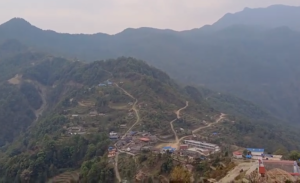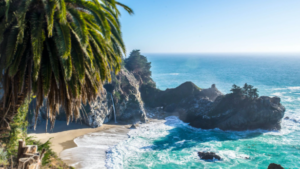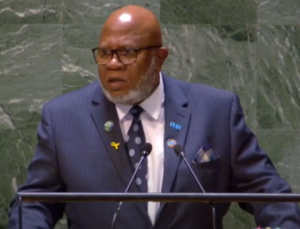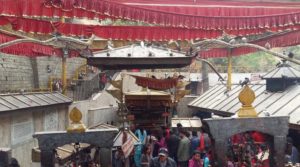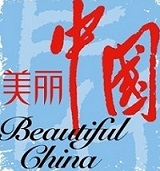Interview : Vietnam prepares for dynamic tourism growth
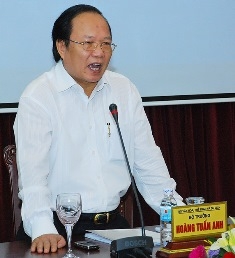
Vietnam’s Culture, Sports and Tourism Minister, HE Hoàng Tuấn Anh, speaks candidly about his country’s Tourism Master Plan 2020 and Vision 2030, the growing driver markets of India and Russia and Viet Nam’s expectations from the ASEAN consolidation.
Your plans for 2015 include an aggressive focus on both India and Russia. Are these your perceived growth driver markets for the future?
With regard to India, it’s identified as one of Vietnam’s biggest potential markets which shall lead the high growth in the future. In 2015, Vietnam Tourism has run many promotional activities for this market such as organising an Indian FAM trip to Viet Nam, a Bollywood film shooting group, and participating in the GES Trade and Services Exhibition and International Travel Mart PATA in India.
About the Russian market, during the recent years the tourist arrivals from Russia have been gaining high growth, with 365 thousand belonging to the top ten biggest markets visiting Viet Nam in 2014. In the early six months of 2015, due to the Russian currency’s devaluation, Russian tourist arrivals to Vietnam decreased compared with the same period of 2014. However, we believe that this market will recover soon and still belongs to the top ten visitor markets to Viet Nam. In 2015, Viet Nam Tourism will continue to participate in the main international travel marts in Russia such as MITT and Intour Market, as well as organise FAM trips and press trips from Russia to Viet Nam for Vietnam tourism promotion.
The latest Skyscanner poll includes Da Nang City as one of the top low-cost destinations for 2015. What are you doing to facilitate this in terms of infrastructure and facilities?
Da Nang is emerging as one of the most attractive destinations in Viet Nam. The city has many policies of facilitating the infrastructure and facilities for tourism development related to investment attraction in Son Tra, Hai Van and Lang Van tourism complex; implementing high-end resort building projects; establishing the co-operation mechanism between the public and the private sector; identifying responsibilities among stakeholders; supporting an enterprises’ campaign of new tourism product development and diversifying tourism accommodation and services to meet all demands.
Viet Nam tourism’s brand ‘Viet Nam Timeless Charm’ was slated to be from 2012 till this year. What is your identified ‘Viet Nam brand’ which was one of the objectives of your 2017-2020 proposed action plan?
Building and implementing the strategy of branding Viet Nam tourism till 2020 is one of the most important missions, with the aim of strengthening the quality, effectiveness, professionalism and competitiveness for Viet Nam Tourism. In fact, Viet Nam tourism branding in the new situation is to ensure:
Firstly, identifying and affirming the core values of Viet Nam Tourism in relationship with defined characteristics and tourism products. Secondly, completing the National Master Plan of regions, routes and sites of tourism destination in the overall orientation for Viet Nam branding and product tourism development, as also calling for investment in outstanding new tourism products in local and main tourism regions. Thirdly, focusing on the branding tourism administration in orienting, supporting and supervising in order to ensure the unity of values and branding images in the promotional activities, while regularly evaluating the branding results for the better adjustments and amendments. Fourthly, pushing forward internal marketing activities in which all the related partners from the governmental organisations and industrial ministries to enterprises, communities and localities who play a role as holders of Viet Nam tourism destinations, must know well and together agree about Viet Nam branding values in order to contribute to Viet Nam’’s brand establishment, consolidation and promotion. Fifthly, upgrading the quality, diversifying the promotional activities and ensuring a united theme and message, but still having special creativity and amendment for each market as well as the focussed market segments. And lastly, supporting the enterprises in building their own brand and strengthening the cooperation between domestic and international entrepreneurs in order to promote their brands related to identified products.
What are your strategies regarding MICE?
MICE is one of Viet Nam’s priority tourism products to develop, as mentioned in the Vietnam Tourism Development Plan to 2020, and Vision to 2030, as well as Vietnam Tourism Marketing Strategy to 2020. In order to develop this product, all the big hotels are equipped with infrastructure and facilities for MICE service, especially in the main cities such as Ha Noi, Ho Chi Minh City, Da Nang, while reinforcing marketing activities and cooperation with regional countries in attracting more MICE arrivals to Viet Nam.
Your competition analysis (Viet Nam Tourism Marketing Strategy) shows that international outbound tourism to the Mekong region is expected to intensify. What is your overall strategy on this?
Besides a particular tourism product development, in order to attract more tourists to Mekong region, Viet Nam has been enhancing the cooperation with the Mekong sub-regional countries in tourism product development and marketing activities, such as the plan for five Mekong sub-regional tourism cities and ACMECS, CLMV tourism development cooperation, organising and participating in the Mekong Tourism Forum annually, and strengthening e-marketing activities to promote Viet Nam tourism destinations in general and Mekong tourism in particular. In the frame of ASEAN tourism development cooperation especially, Viet Nam is assigned as the lead country for river-based tourism, focusing on researching and exploring the value of Mekong region with the close cooperation of UNWTO consultants in carrying out research analysis, with the aim of recommending the proper policies of developing river-based tourism in the Mekong region in particular, as well as marketing these river-based tourism products for all ASEAN countries in general.
What are the new tourism projects for Viet Nam?
Vietnam has been strengthening investment attraction into tourism development with a variety of projects related to infrastructures, facilities, human resources and sustainable tourism, with co-operation between the public and private sectors. Beside the on-going projects such as Mekong Sub-region Tourism Development Project funded by ADB Bank, the Environmentally and Socially Responsible Tourism Capacity Development Programme funded by the European Union for the time being, other concerned projects include: A green, smart city in Da Nang; the European Village and Coastal Luxury Resort Sun Villas, Dai Duong Park Complex in Quang Ninh and a building telpher from Sa Pa to Fansipan Peak in Lao Cai. All projects are strictly oriented to sustainability development and community benefits.
In 2013, Viet Nam approved the National Tourism Promotion Programme for the period 2013-2020 which included a sustainable tourism policy. What concrete steps have been taken to achieve this?
Sustainable tourism development has been both the viewpoint and the target identified in Viet Nam’s Tourism strategy. The National Tourism Promotion Programme for the period 2013-2020 is one of the strategic plans with the aim of reaching the targets of Viet Nam Tourism Master Plan 2020, and Vision 2030. Thus, all the missions in the Programme are carried out in the sustainable development orientation.
In the past, the Viet Namese government has concentrated on nationwide activities related to raising awareness on environmental conservation, both social and natural environment in tourism sites and maintaining the quality, friendliness and safety in all destinations, thus attracting more international tourist arrivals to Viet Nam.
It is great that Viet Nam recognises the current visa rules are hampering and restrictive and is taking action to redress this. Will more countries be added to the visa exemption list, following the recommendations from tourism officials?
The Viet Nam government has perceived the important role of visa policies in attracting more international tourists to Viet Nam. Until now, Viet Nam has implemented the unilateral visa exemption for 13 countries including: Russia, Belarus, Japan, Korea, Denmark, Norway, Sweden, Holland, Germany, France, United Kingdom, Italy and Spain and has implemented the lateral visa exemption for all ASEAN countries. It has also applied a visa exemption for international tourists to Phu Quoc Island for a period of 30 days. In the future, Viet Nam Tourism shall continue to recommend other countries to the government to be considered in the list of visa exemption countries.
What is Viet Nam’s expectation from the AEC in terms of tourism/visitor arrivals?
The ASEAN Economic Community is a big market with over 600-million population. To integrate within the AEC, Viet Nam wishes to attract more international tourists from these member states as well as those from third countries to ASEAN as a single destination.
Please elaborate Viet Nam Tourism Master Plan 2020, and Vision 2030. Are there any linkages with ASEAN as a single destination?
Viet Nam Tourism Master Plan 2020 and Vision 2030 was born with the aim of speeding up Viet Nam tourism in terms of quality and depth, to satisfy the current demand in professionalism, modernity, integration, effectiveness and sustainability that would be worth the country’s great potential as competition with the other countries in the region, and worldwide.
In order to reach the above target, Viet Nam has been actively co-operating with ASEAN member states in developing tourism products and marketing and promotion activities, especially for the whole ASEAN destination as a single destination. At present, the Viet Nam National Administration of Tourism is co-operating with all the ASEAN countries in actively carrying out the initiative of the ‘Go ASEAN’ channel established by Malaysia. Besides, for Viet Nam Tourism’s participation in all domestic and international travel marts, we focus on branding both Vietnam Tourism’s logo and slogan, ‘Vietnam – Timeless Charm’ and the ASEAN Tourism’s logo and slogan, ‘ASEAN – Feel the Warmth.’
Will the ASEAN Mutual Recognition Agreement in Tourism Professionals help to ensure the distribution of wealth from tourism?
The ASEAN MRT-TP aims at professional standardisation as well as facilitating tourism labour force transference, creating new chances for the labour and upgrading service qualifications of the regional tourism entrepreneurs. Thus, we do believe that ASEAN (MRA-TP) will help to make the benefits from tourism equal for all.
Further information – visitwww.aseantourism.travel /ASEAN Tourism Marketing and Communication Working Group:atmcwg@gmail.com
ASEAN Secretariat:eddy@asean.org
July 2015



